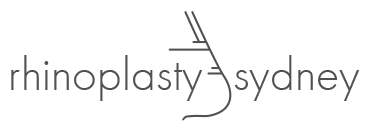Rhinoplasty, commonly known as a nose job, is one of the most sought-after cosmetic medical procedures worldwide. Whether aiming to enhance your facial features, correct a breathing issue, or address a congenital deformity, understanding the age requirements and other essential factors is crucial before deciding to undergo this transformative procedure. This comprehensive guide delves into how old you must be to get a nose job, the considerations involved, and what you can expect from the journey towards achieving your desired outcome.
Understanding Rhinoplasty Surgery
Rhinoplasty is a complex procedure that aims to reshape the nose to achieve aesthetic harmony with the rest of the facial features or to improve functional aspects such as breathing. This surgery can address various concerns, including the size and shape of the nose, the angle between the nose and the upper lip, and structural issues like a deviated septum.
Types of Rhinoplasty Procedures
There are primarily two types of rhinoplasty procedures:
- Open Rhinoplasty involves making small incisions on the columella (the tissue between the nostrils), allowing the doctor better visibility and access to the nasal structures. This method is typically preferred for more extensive reshaping or reconstruction.
- Closed Rhinoplasty: All incisions are made within the nostrils, resulting in no visible scarring. This approach is generally suitable for minor adjustments and has a shorter recovery time.
Additionally, some patients may require revision rhinoplasty if they are unsatisfied with the results of their initial surgery or if functional issues persist.
Age Requirements for a Nose Job
One of the most common questions prospective patients ask is, “how old do you have to be to get a nose job?” The answer isn’t straightforward, as it involves physical and emotional maturity.
Physical Maturity
The patient’s nasal bones must be fully developed. In general:
- Females: Typically, girls reach nasal bone maturity by around 16.
- Males: Boys may continue to develop until about 17 years of age.
However, these are general guidelines, and individual growth patterns can vary. It’s essential to consult with a board-certified cosmetic doctor who can assess whether the nasal structures are fully developed.
Emotional and Psychological Readiness
Beyond physical maturity, undergoing cosmetic medicine requires a certain emotional and psychological readiness. Patients should have realistic expectations about the surgery’s outcomes and be mentally prepared for the changes. A mental health assessment may be part of the consultation process to ensure that the patient is seeking surgery for the right reasons and is prepared for the healing process and final results.
Reasons for Undergoing Rhinoplasty
People opt for nose jobs for various reasons, broadly categorized into cosmetic and medical:
Cosmetic Reasons
- Enhancing Facial Features: To achieve better facial harmony by reshaping the nose to complement other features.
- Correcting a Crooked Nose: To straighten the nasal structure for a more balanced appearance.
- Adjusting Size: To reduce or increase the nose size to better fit the face.
Medical Reasons
- Improving Breathing: Addressing structural issues like a deviated septum that causes breathing difficulties.
- Reconstructive Purposes: Correcting deformities resulting from accidents or congenital conditions.
The Rhinoplasty Consultation
A rhinoplasty consultation is a crucial step in the process of a nose surgery. During this session, the cosmetic doctor will evaluate your nasal structure, discuss your goals, and determine the most suitable surgical approach. This is also the time to ask questions about the rhinoplasty procedure, recovery time, and potential risks.
Preparing for Your Consultation
- Research: Understand the basics of rhinoplasty and clearly understand what you want to achieve.
- Medical History: Be prepared to discuss your medical history, including any past surgeries or existing health conditions.
- Expectations: Have realistic expectations and be open to the doctor’s professional advice on what is achievable.
The Surgical Procedure

Steps Involved in Rhinoplasty Surgery
- Anesthesia: Administering general anaesthesia.
- Incisions: Small incisions are made inside the nostrils (closed rhinoplasty) or across the columella (open rhinoplasty).
- Reshaping the Nasal Bone and Cartilage: Modifying the nasal structures to achieve the desired shape.
- Closing the Incisions: Suturing the incisions to minimize scarring.
- Recovery: Apply splints and bandages to support the new nasal structure during healing.
Recovery and Healing Process
Post-surgery, patients can expect a period of recovery that varies in duration and intensity based on the extent of the procedure.
What to Expect During Recovery
- Immediate Aftercare: Swelling and bruising around the eyes and nose are common and typically subside within a few weeks.
- Follow-Up Care: Regular check-ups with the doctor to monitor healing progress.
- Activity Restrictions: Avoid strenuous activities and contact sports for several weeks to prevent complications.
- Final Results: While initial swelling may reduce within a month, the final results of the rhinoplasty can take up to a year to fully materialize.
Managing Discomfort and Scarring
- Pain Management: Prescribed medications can help manage any discomfort.
- Scarring: Techniques like small incisions and careful suturing minimize visible scarring, especially with closed rhinoplasty.
Choosing the Right Cosmetic Doctor
Selecting a board-certified cosmetic doctor with extensive experience in rhinoplasty is paramount to achieving successful outcomes. Here are key factors to consider:
- Credentials and Certifications: Ensure relevant medical boards accredit the doctor.
- Experience: Look for a doctor who has performed numerous rhinoplasty surgeries and has a portfolio of before-and-after photos.
- Patient Reviews: Testimonials and reviews can provide insight into the doctor’s expertise and patient satisfaction levels.
- Personal Rapport: A good doctor-patient relationship fosters trust and adequately addresses your concerns and expectations.
Risks and Considerations
As with any surgical procedure, rhinoplasty comes with potential risks and complications, including:
- Infection
- Bleeding
- Adverse reactions to anesthesia
- Nasal obstruction or breathing difficulties
- Unsatisfactory aesthetic results, potentially requiring revision rhinoplasty
Thorough consultation and choosing a reputable doctor can mitigate many of these risks.
Cost of Rhinoplasty
The cost of a nose job can vary depending on several factors, including the complexity of the procedure, the doctor’s expertise, and the clinic’s geographic location. It’s essential to discuss all costs upfront during your consultation to understand what is included and explore financing options if needed.
Preparing for Surgery
Proper preparation can significantly influence the success of your rhinoplasty and the efficiency of your recovery.
Pre-Surgery Tips
- Avoid Smoking and Alcohol: These can interfere with the healing process and increase the risk of complications.
- Medications: Inform your doctor about any medications or supplements you are taking, as some may need to be discontinued before surgery.
- Plan Your Recovery: Arrange for someone to assist you post-surgery, especially in the first few days.
Post-Surgery Care

Tips for a Smooth Recovery
- Keep Your Head Elevated: This helps reduce swelling and promotes better breathing.
- Stay Hydrated and Eat Well: Proper nutrition supports the healing process.
- Attend Follow-Up Appointments: Regular check-ins allow your doctor to monitor your progress and address any concerns promptly.
Realistic Expectations and Final Results
Realistic expectations are vital when considering a nose job. While rhinoplasty can significantly enhance your appearance and improve breathing, it’s essential to understand that perfection is subjective, and every surgical outcome has its nuances.
Achieving Your Desired Outcome
Discussing your goals thoroughly with your doctor and understanding what is surgically possible can help align your expectations with the final results. Patience is also key, as the healing process can take time, and the full benefits of the surgery become apparent over several months.
Conclusion
Deciding to undergo a nose job is a significant decision that involves careful consideration of various factors, including age, physical and emotional readiness, and the expertise of your chosen cosmetic doctor. By understanding how old do you have to be to get a nose job and what the procedure entails, you can make an informed choice that aligns with your aesthetic goals and enhances your overall well-being.
If you’re considering rhinoplasty and want to explore your options further, please contact us at (02) 8880 9037. Our team of experienced and board-certified cosmetic doctors is here to guide you through every step of your rhinoplasty journey, ensuring you achieve the results you desire with the utmost care and professionalism.
References
https://www.plasticsurgery.org/news/briefing-papers/briefing-paper-plastic-surgery-for-teenagers
https://www.ncbi.nlm.nih.gov/books/NBK558970/#:~:text=Agewise%2C%20this%20surgery%20is%20usually,17%20years%20old%20for%20males.
https://www.healthline.com/health/rhinoplasty


Recent Comments